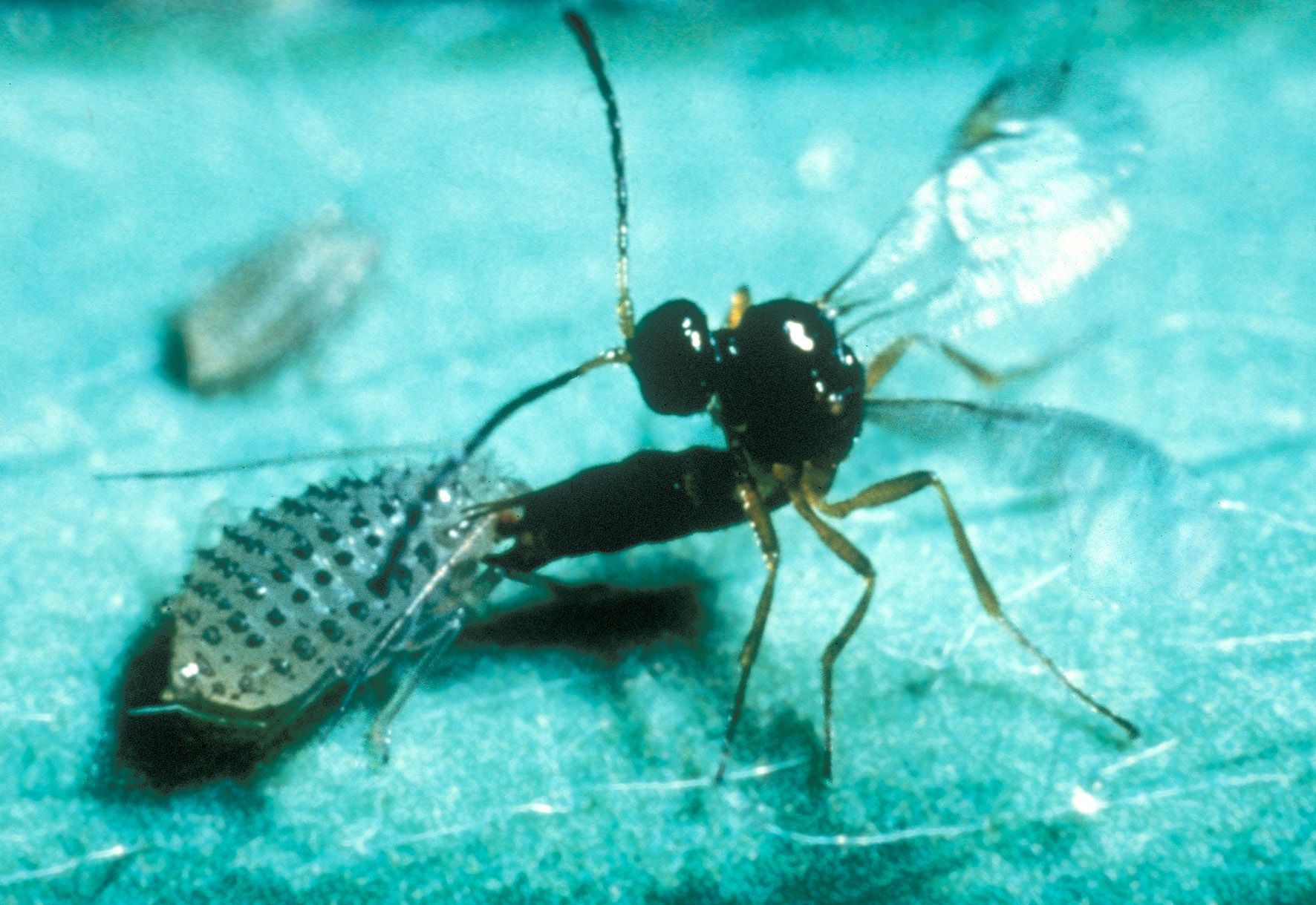|
Jumping Plant Louse
Psyllidae, the jumping plant lice or psyllids, are a family of small plant-feeding insects that tend to be very host-specific, i.e. each plant-louse species only feeds on one plant species (monophagous) or feeds on a few closely related plants (oligophagous). Together with aphids, phylloxerans, scale insects and whiteflies, they form the group called Sternorrhyncha, which is considered to be the most "primitive" group within the true bugs (Hemiptera). They have traditionally been considered a single family, Psyllidae, but recent classifications divide the group into a total of seven families; the present restricted definition still includes more than 70 genera in the Psyllidae. Psyllid fossils have been found from the Early Permian before the flowering plants evolved. The explosive diversification of the flowering plants in the Cretaceous was paralleled by a massive diversification of associated insects, and many of the morphological and metabolic characters that the flowering p ... [...More Info...] [...Related Items...] OR: [Wikipedia] [Google] [Baidu] |
Psylla Alni
''Psylla alni'' is a species of Psyllidae, psyllid, a plant-feeding Hemiptera, hemipteran in the family Psyllidae. It is the type species of ''Psylla'', which is the type genus in its family. Distribution This species is present in the Palearctic realm (from Europe to Siberia and Sakhalin, Kazakhstan, Caucasus) and in the Nearctic realm (Canada and United States of America). Description ''Psylla alni'' can reach a body length of about . These rather large psyllids have a green head, body, and legs, and rather long antennae. The costal marginal veins of the wings are green, while the other veins are brown. Adults are initially green, later becoming orange, brown, or reddish. The nymphs are usually covered by white waxy secretions. In the 5th preimaginal stage nymphs can reach a length of about . Biology Adults can be found from June to October. This species has one generation a year (Voltinism, univoltine) and overwinters as an egg. It is monophagous on most Betulaceae (''Alnu ... [...More Info...] [...Related Items...] OR: [Wikipedia] [Google] [Baidu] |
Parasitoid
In evolutionary ecology, a parasitoid is an organism that lives in close association with its host (biology), host at the host's expense, eventually resulting in the death of the host. Parasitoidism is one of six major evolutionarily stable strategy, evolutionary strategies within parasitism, distinguished by the fatal prognosis for the host, which makes the strategy close to predation. Among parasitoids, strategies range from living inside the host (''endoparasitism''), allowing it to continue growing before emerging as an adult, to Paralysis, paralysing the host and living outside it (''ectoparasitism''). Hosts can include other parasitoids, resulting in hyperparasitism; in the case of oak galls, up to five levels of parasitism are possible. Some parasitoids Behavior-altering parasite, influence their host's behaviour in ways that favour the propagation of the parasitoid. Parasitoids are found in a variety of Taxon, taxa across the insect superorder Endopterygota, whose compl ... [...More Info...] [...Related Items...] OR: [Wikipedia] [Google] [Baidu] |

